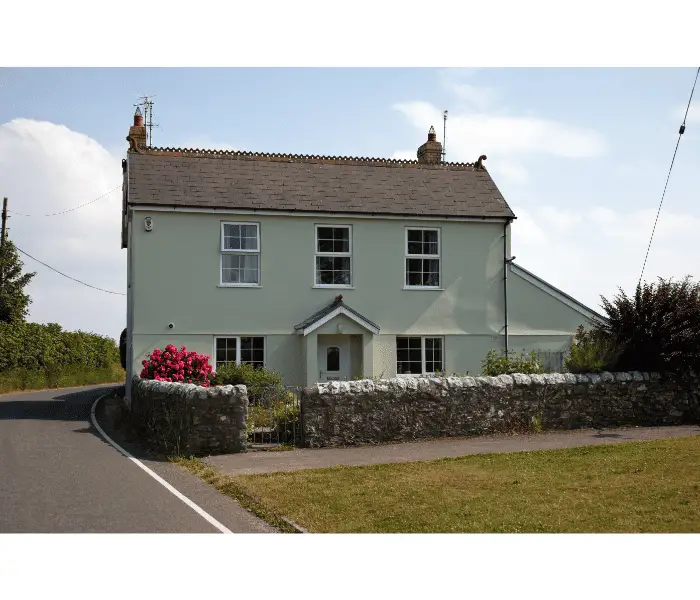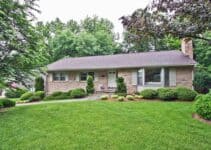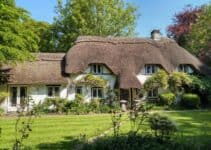There are over 25 million residential properties throughout the UK, ranging from detached homes and terraced houses to bungalows. Each property type brings with it a distinct set of characteristics, features and charms – meaning what’s best suited for one person might not be best suited to another.
Whether you’re in the market for a new home or not, chances are that you’ve heard of both cottages and terraced houses.
But what are the defining characteristics between cottage vs terraced house? And are there any significant differences between them?
In this article, we’ll take a look at the history of each type of housing, whereabouts you might find them, and what are the key characteristics that set them apart from one another.
Cottages
Cottages are small, usually one-story houses. They’re often built in rural areas, and they’re usually made of wood and stone. The word “cottage” comes from the old Norse word “kot,” which means “hut.” So, in other words: cottages were originally just huts.
The first cottages were built in northern Europe during the Middle Ages by peasants who needed protection from wild animals and harsh weather conditions. They were also used as homes for farmers who lived on their own land.
Over time, these small homes became more popular among wealthy landowners in England because they were cheaper than bigger houses that required more materials to build and maintain (and also because a lot of people found them cute).
Modern cottages are no longer simply huts used to seek shelter from wild animals or harsh weather, and in the modern sense of the word, the cottage is used to describe properties that have retained a certain traditional appearance.
Often associated with rural areas, they can be used as holiday homes or as a second home for those who work in the city but want to escape to a quieter spot at the weekend.
Cottages are usually built with wooden beams and stone walls that are thick enough to withstand strong winds and weathering over time.
Some have thatched roofs instead of tiles because, despite what most people think, thatch can actually last longer than slate – plus it looks more traditional.
Terraced Houses
Terraced houses were introduced to London from Italy in the 1630s. They were popular among the upper classes for a few centuries, until the Industrial Revolution made them more affordable for the working class.
The Victorian era saw terraced houses become much more common in England, and they have remained popular up until this very day.

What is a Terraced House?
Terraced houses are houses that are built side by side in a row.
This type of housing is found all over the world, but the term terraced housing usually refers to properties found in the UK, Australia, New Zealand and Ireland – and is arguably the most well-known and iconic type of housing in the UK.
Terraced houses are usually designed to be rented out to multiple families – they have little privacy from the neighbours, but the rent is cheaper than renting a detached house by yourself.
Due to their efficient, space-saving design, terraced housing is most typically found in the heart of urban areas, where the cost of land is at a premium.
Terraced houses can come with both individual and shared gardens – a benefit if your neighbours are willing to look after the garden. Additionally, certain terraced developments may have no rear garden – another cost-saving aspect.
Terraced neighbourhoods usually have a great sense of community as you’re forced to get to know each other due to the proximity.
You’ll be able to hear a lot through your walls, meaning sometimes you might get to know your neighbours too well. When living in terraced housing, the quality of your neighbours can really have an impact on your quality of life.

Key Differences Between Cottages vs Terraced Houses
So now you know all about Cottages and Terraced houses, but just what are the key differences between the two housing styles?
The main difference is location. Cottages are almost exclusively found in rural areas and will have at least a small garden and a bit of land. Terraced houses on the other hand are almost exclusively found in urban areas, with the vast majority of terraced houses being located in the heart of inner cities.
Another key difference is the design. Modern cottages using retain some of the characteristics of the original ‘cottages’ built in medieval times – be it a thick stone walled construction or thatched roofs.
Terraced houses on the other hand may feature a wide range of styles and designs, with traditional Victorian terraced houses found all across the UK, in addition to a variety of contemporary terraced developments.
Although you can find terraced cottages (more on this later), the vast majority of cottages are detached, standalone properties.
Traditional cottages will typically be slightly smaller than modern terraced houses, with their construction originally intended for housing only a few people, or for use as a second property.
Can A Terraced House Be a Cottage?
Technically yes, cottages may be detached or terraced houses. In fact, terraced cottages were typically used in the UK to house miners in rural villages.
What made these building cottages was the rural location, traditional design style, and open access to a cottage garden.
However, the vast majority of cottages are detached, with the word cottage being synonymous with a standalone property set in a quaint rural village.
What is a Detached House?
A detached house is simply a home that stands by itself.
There are no other homes on the same plot of land as the detached house. Whilst most cottages are detached houses, most detached houses aren’t cottages – make sense?

Cottage vs Detached House
Cottages are smaller and more modest than suburban detached houses. They’re often older, but they don’t have to be—they just generally feel more rustic and traditional than detached homes.
In the UK you’ll find detached houses everywhere – although they’re most synonymous with suburban areas and are typically used as family homes
That’s because their design tends to be a little more old-fashioned, with features like sloping roofs or stone walls instead of the clean lines found in modern homes.
Cottages usually have less square footage too, which means they’re probably less suited to being permanent family homes and are favoured for couples, or for use as a holiday home.
Are Cottages Detached?
As touched on, most cottages are usually detached. A cottage typically stands alone on its own piece of land, in a rural setting.
The main difference between detached houses and cottages is that the latter is a style of house, while the former is a distinct type of property. A cottage is usually smaller than a typical home, with less square footage and more modest features. It’s also usually more affordable and has less maintenance.
Cottages are smaller than both modern detached houses and terraced houses too, and they tend to be more modest in style as well (although there are some beautiful luxury cottages).
Who should live in a cottage?
Cottages are perfect for anyone who loves the outdoors. It’s not just the beautiful scenery that makes cottages so special, though—it’s also their small, cosy size.
Cottages are great for people who want to get away from the hustle and bustle of city life, but don’t want to live in isolation.
They can be easily rented out as vacation homes or even used as permanent residences by those who don’t mind being far away from civilisation.
They’re also great if you have pets. Cottages are usually much smaller than houses, which means they have less space for your dog to run around in and make noise.
Most cottages also have outdoor spaces where dogs can play safely without upsetting other residents at night or disturbing neighbours during the day.
Who should live in a terraced house?
Terraced houses are well suited for a wide range of people. They’re ideal for families, as they tend to have more rooms than other housing options like cottages and can often accommodate large groups of people.
They’re also great for those who like the idea of living in a community and having the opportunity to get to know their neighbours.
Terraced houses are also perfect for people looking to rent or buy in this kind of property on a budget – for example, university students or young professionals.
If you share the rent with the other occupants, terraced housing is often cheaper than other options, making it a great choice for those who want an affordable place to live without sacrificing quality or size.
Terraced Houses Vs Cottages
We hope you’ve enjoyed this brief overview of cottages and terraced houses, as well as a look at where are the key characteristics that distinguish these two types of property.
In summary – terraced houses are houses constructed wall to wall, typically found in inner city areas.
Cottages are found in rural areas, are usually detached, and retain traditional design aspects such as stone walls and thatched roofs.



